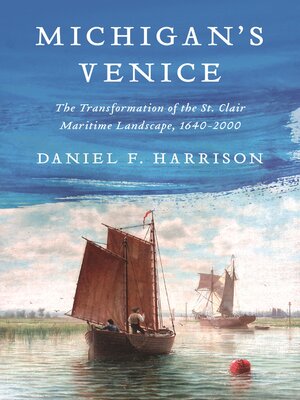Michigan's Venice
ebook ∣ The Transformation of the St. Clair Maritime Landscape, 1640–2000
By Daniel F. Harrison

Sign up to save your library
With an OverDrive account, you can save your favorite libraries for at-a-glance information about availability. Find out more about OverDrive accounts.
Find this title in Libby, the library reading app by OverDrive.



Search for a digital library with this title
Title found at these libraries:
| Loading... |
Few maritime landscapes in the Great Lakes remain so deeply and clearly inscribed by successive cultures as the St. Clair system—a river, delta, and lake found between Lake Huron and the Detroit River. The St. Clair River and its environs are an age-old transportation nexus of land and water routes, a strategic point of access to maritime resources, and, in many ways, a natural impediment to the navigation of the Great Lakes. From Indigenous peoples and European colonizers to the modern nations of Canada and the United States, this work traces the region's transformation through culturally driven practices and artifacts of shipbuilding, navigation, place naming, and mapmaking. In this novel approach to maritime landscape archaeology, author Daniel F. Harrison unifies historiography, linguistics, ethnohistory, geography, and literature through the analysis of primary sources, material culture, and ecological and geographic data in a technique he calls "evidence-based storytelling." Viewed over time, the region forms a microcosm of the interplay of environment, culture, and technology that characterized the gradual shift from nature to an industrial society and a built environment optimized for global waterborne transport.






